 W
WThe Albemarle Settlements were the first permanent English settlements in what is now North Carolina, founded in the Albemarle Sound and Roanoke River regions, beginning about the middle of the 17th century. The settlers were mainly Virginians migrating south.
 W
WArbella or Arabella was the flagship of the Winthrop Fleet on which Governor John Winthrop, other members of the Company, and Puritan emigrants transported themselves and the Charter of the Massachusetts Bay Company from England to Salem between April 8 and June 12, 1630, thereby giving legal birth to the Commonwealth of Massachusetts. John Winthrop is reputed to have given the famous "A Model of Christian Charity" sermon aboard the ship. Also on board was Anne Bradstreet, the first European female poet to be published from the New World, and her family.
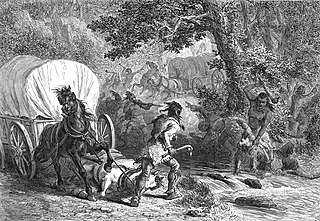 W
WThe Battle of Bloody Brook was fought on September 18, 1675 OS between English colonial militia from the Massachusetts Bay Colony and a band of Indians led by the Nipmuc sachem Muttawmp, during King Philip's War. The Indians ambushed colonists escorting a train of wagons carrying the harvest from Deerfield to Hadley, and killed at least 40 militia men and 17 teamsters out of a company that included 79 militia.
 W
WBermuda is a British Overseas Territory in the North Atlantic Ocean. It is approximately 1,035 km (643 mi) east-southeast of Cape Hatteras, North Carolina ; 1,236 km (768 mi) south of Cape Sable Island, Nova Scotia; 1,759 km (1,093 mi) northeast of Cuba, and 1,538 km (956 mi) due north of the British Virgin Islands. Though it is typically referred to in the singular, Bermuda consists of 181 islands; the largest of these islands is known as Main Island. The capital city of Bermuda is Hamilton. Bermuda is internally self-governing, with its own constitution and cabinet of ministers selected from the elected Members of the lower house of a Parliament that enacts local laws. As the national government, the Government of the United Kingdom is ultimately responsible for ensuring good governance within British Overseas Territories, and retains responsibility for defence and foreign relations. As of July 2018, it has a population of 71,176, making it the most populous of the British overseas territories. Bermuda's largest industries are offshore insurance, reinsurance, and tourism. Bermuda had one of the world's highest GDP per capita for most of the 20th century.
 W
WThe Canada Company was a large private chartered British land development company, incorporated by royal charter on August 19, 1826, under an act of British parliament, given royal assent on June 27, 1825, to aid in the colonization of a large part of Upper Canada. Originally formed to acquire and develop Upper Canada's undeveloped clergy reserves and crown reserves which, in 1827, the Company acquired for £341,000 ($693,000) from the Province of Upper Canada.
 W
WThe Chesapeake Colonies were the Colony and Dominion of Virginia, later the Commonwealth of Virginia, and Province of Maryland, later Maryland, both colonies located in British America and centered on the Chesapeake Bay. Settlements of the Chesapeake region grew slowly due to diseases such as malaria. Most of these settlers were male immigrants from England who died soon after their arrival. Due to the majority of men, eligible women did not remain single for long. The native-born population eventually became immune to the Chesapeake diseases and these colonies were able to continue through all the hardships.
 W
WThe Connecticut Colony or Colony of Connecticut, originally known as the Connecticut River Colony or simply the River Colony, was an English colony in New England which became the state of Connecticut. It was organized on March 3, 1636 as a settlement for a Puritan congregation, and the English permanently gained control of the region in 1637 after struggles with the Dutch. The colony was later the scene of a bloody war between the colonists and Pequot Indians known as the Pequot War. Connecticut Colony played a significant role in the establishment of self-government in the New World with its refusal to surrender local authority to the Dominion of New England, an event known as the Charter Oak incident which occurred at Jeremy Adams' inn and tavern.
 W
WA Description of New England is a work written by John Smith and published in 1616 as a propaganda piece advertising the fertile land, abundant resources and general plenitude that was to be found in the New World.
 W
WDiscovery or Discoverie was a small 20-ton, 38-foot (12 m) long "fly-boat" of the British East India Company, launched before 1602. It was one of the three ships on the 1606–1607 voyage to the New World for the English Virginia Company of London. The journey resulted in the founding of Jamestown in the new Colony of Virginia.
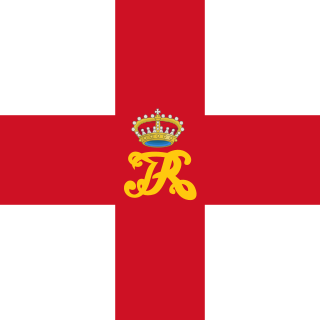 W
WThe Dominion of New England in America (1686–89) was an administrative union of English colonies covering New England and the Mid-Atlantic Colonies. Its political structure represented centralized control similar to the model used by the Spanish monarchy through the Viceroyalty of New Spain. The dominion was unacceptable to most colonists because they deeply resented being stripped of their rights and having their colonial charters revoked. Governor Sir Edmund Andros tried to make legal and structural changes, but most of these were undone and the Dominion was overthrown as soon as word was received that King James II had left the throne in England. One notable change was the introduction of the Church of England into Massachusetts, whose Puritan leaders had previously refused to allow it any sort of foothold.
 W
WElizabeth Island is the name given to an island off the tip of South America visited by Sir Francis Drake in September 1578, during his circumnavigation of the globe. The island was not seen again and is regarded as a phantom. Various suggestions have been offered as to where Drake landed.
 W
WThe Fundamental Orders were adopted by the Connecticut Colony council on January 14, 1639 O.S.. The fundamental orders describe the government set up by the Connecticut River towns, setting its structure and powers. They wanted the government to have access to the open ocean for trading.
 W
WGodspeed, under Captain Bartholomew Gosnold, was one of the three ships on the 1606–1607 voyage to the New World for the English Virginia Company of London. The journey resulted in the founding of Jamestown in the new Colony of Virginia.
 W
WGolden Hind was a galleon captained by Francis Drake in his circumnavigation of the world between 1577 and 1580. She was originally known as Pelican, but Drake renamed her mid-voyage in 1578, in honour of his patron, Sir Christopher Hatton, whose crest was a golden hind. Hatton was one of the principal sponsors of Drake's world voyage. A full-sized, seaworthy reconstruction exists in London, on the south bank of the Thames.
 W
WGray Lock, was a Western Abenaki warrior chieftain of Woronoco/Pocumtuck ancestry who came to lead the Missisquoi Abenaki band, and whose direct descendants have led the Missisquoi Abenaki until the current day. Born around 1670 near what is now Westfield, Massachusetts, he eventually became the most illustrious and prominent leader to arise among the dwindling Waranoak, once the predominant original inhabitants of the central Connecticut River Valley in today's New England region.
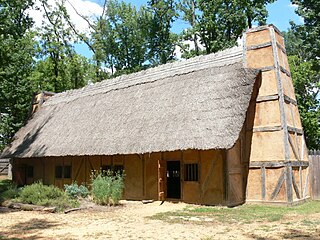 W
WThe "Citie of Henricus"—also known as Henricopolis, Henrico Town or Henrico—was a settlement in Virginia founded by Sir Thomas Dale in 1611 as an alternative to the swampy and dangerous area around the original English settlement at Jamestown, Virginia. It was named for Prince Henry, the eldest son of King James I.
 W
WSaint Kitts and Nevis have one of the longest written histories in the Caribbean, both islands being among Spain's and England's first colonies in the archipelago. Despite being only two miles apart and quite diminutive in size, Saint Kitts and Nevis were widely recognized as being separate entities with distinct identities until they were forcibly united in the late 19th century.
 W
WJamestown was the first settlement of the Virginia Colony, founded in 1607, and served as the capital of Virginia until 1699, when the seat of government was moved to Williamsburg. This article covers the history of the fort and town at Jamestown proper, as well as colony-wide trends resulting from and affecting the town during the time period in which it was the colonial capital of Virginia.
 W
WThe Hudson's Bay Company is a Canadian retail business group. A fur trading business for much of its existence, HBC now owns and operates retail stores in Canada and the United States.
 W
WThe Indian massacre of 1622, popularly known as the Jamestown massacre, took place in the English Colony of Virginia, in what is now the United States, on 22 March 1622. John Smith, though he had not been in Virginia since 1609 and was not an eyewitness, related in his History of Virginia that warriors of the Powhatan "came unarmed into our houses with deer, turkeys, fish, fruits, and other provisions to sell us". The Powhatan then grabbed any tools or weapons available and killed all the English settlers they found, including men, women, and children of all ages. Chief Opechancanough led the Powhatan Confederacy in a coordinated series of surprise attacks; they killed a total of 347 people, a quarter of the population of the Virginia colony.
 W
WA Journey to the New World: The Diary of Remember Patience Whipple, Mayflower, 1620 is a historical novel for young readers. It is the first book in the series Dear America. Remember Patience Whipple is a girl who was on board the Mayflower and is sailing from England. She is headed toward the New World with her family of four. Mr. Whipple is Patience’s father and can fix things. Mam, Patience’s mother, and Blessing who is Patience’s little sister. Patience has a friend called Hummy and she too is sailing on the Mayflower to the New World. Hummy's father is who takes care of her, because Hummy's mother died, this makes Hummy's father very melancholic. This is the first novel in the Dear America series.
 W
WMaryland Dove is a re-creation/replica of Dove, an early 17th-century English trading ship, one of two ships which made up the first expedition from England to the Province of Maryland. The modern Dove was designed by the naval architect and naval historian William A. Baker.
 W
WThe Massachusetts Bay Colony (1628–1691), more formally The Colony of Massachusetts Bay, was an English settlement on the east coast of America around the Massachusetts Bay, the northernmost of the several colonies later reorganized as the Province of Massachusetts Bay. The lands of the settlement were in southern New England, with initial settlements on two natural harbors and surrounding land about 15.4 miles (24.8 km) apart—the areas around Salem and Boston, north of the previously established Plymouth Colony. The territory nominally administered by the Massachusetts Bay Colony covered much of central New England, including portions of Massachusetts, Maine, New Hampshire, and Connecticut.
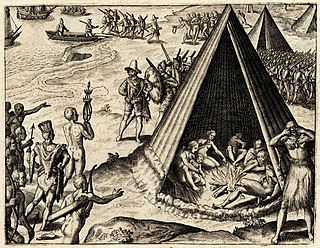 W
WNew Albion, also known as Nova Albion, was the name of the continental area north of Mexico claimed by Sir Francis Drake for England when he landed on the North American west coast in 1579. This claim became the justification for English charters across America to the Atlantic coast and soon influenced further national expansion projects on the continent. Today, Drake's landing site is known as Point Reyes, California, a marine environment which is the setting of several small towns, ranches, and Point Reyes National Seashore.
 W
WNew England is a region comprising six states in the Northeastern United States: Maine, Vermont, New Hampshire, Massachusetts, Rhode Island, and Connecticut. It is bordered by the state of New York to the west and by the Canadian provinces of New Brunswick to the northeast and Quebec to the north. The Atlantic Ocean is to the east and southeast, and Long Island Sound is to the southwest. Boston is New England's largest city, as well as the capital of Massachusetts. Greater Boston is the largest metropolitan area, with nearly a third of New England's population; this area includes Worcester, Massachusetts, Manchester, New Hampshire, and Providence, Rhode Island.
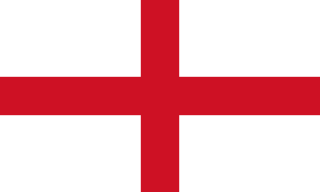 W
WThe New Haven Colony was a small English colony in North America from 1637 to 1664 in what is now the state of Connecticut.
 W
WNewfoundland Colony was an English and later British colony established in 1610 on the island of the same name off the Atlantic coast of Canada, in what is now the Canadian province of Newfoundland and Labrador. That followed decades of sporadic English settlement on the island, which was at first seasonal, rather than permanent. It was made a Crown colony in 1854 and a Dominion in 1907. Its economy collapsed during the Great Depression, and Newfoundland relinquished its dominion status, becoming once again a Crown colony governed by appointees from the Colonial Office in Whitehall in London. American forces occupied much of the colony in World War II, and prosperity returned. In 1949, the colony voted to join Canada as the Province of Newfoundland, but in 2001, its name was officially changed to Newfoundland and Labrador.
 W
WNine Men's Misery is a site in current day Cumberland, Rhode Island, where nine colonists were tortured by the Narragansett Indian tribe during King Philip's War. A stone memorial was constructed in 1676 which is believed to be the oldest veterans memorial in the United States.
 W
WThe Province of Pennsylvania, also known as the Pennsylvania Colony, was founded by William Penn after receiving a land grant from Charles II of England in 1681. The name Pennsylvania refers to William's father, Admiral Sir William Penn. The Province of Pennsylvania was one of the two major Restoration colonies. The proprietary colony's charter remained in the hands of the Penn family until they were ousted by the American Revolution, when the Commonwealth of Pennsylvania was created and became one of the original thirteen states. "The lower counties on Delaware", a separate colony within the province, broke away during the American Revolution as "the Delaware State" and also was one of the original thirteen states. The colony attracted Quakers, Germans, and Scots-Irish frontiersmen. The Peaceful Lenape promoted peace with the Quakers, but wars eventually broke out anyway after William Penn & Tamanend were no longer living, and Lenape beliefs were demonized even though the Quakers came seeking religious freedom. Philadelphia became a major port and commercial city.
 W
WThe Pilgrims were the English settlers who came to North America on the Mayflower and established the Plymouth Colony in what is today Plymouth, Massachusetts, named after the final departure port of Plymouth, Devon. Their leadership came from the religious congregations of Brownists, or Separatist Puritans, who had fled religious persecution in England for the tolerance of 17th-century Holland in the Netherlands.
 W
WPlimoth Plantation is a living history museum in Plymouth, Massachusetts, founded in 1947. It attempts to replicate the original settlement of the Plymouth Colony established in the 17th century by the English colonists who became known as the Pilgrims. They were among the first people who immigrated to America to seek religious separation from the Church of England. It is a not-for-profit museum supported by Administrations, contributions, grants, and volunteers. The re-creations are based upon a wide variety of first-hand and second-hand records, accounts, articles, and period paintings and artifacts, and the museum conducts ongoing research and scholarship, including historical archaeological excavation and curation locally and abroad.
 W
WPort Tobacco, officially Port Tobacco Village, is a town in Charles County, in southern Maryland, United States. The population was 13 at the 2010 census, making Port Tobacco the smallest incorporated town in Maryland.
 W
WA proprietary colony was a type of English colony mostly in North America and in the Caribbean in the 17th century. In the British Empire, all land belonged to the monarch, and it was his/her prerogative to divide. Therefore, all colonial properties were partitioned by royal charter into one of four types: proprietary, royal, joint stock, or covenant. King Charles II used the proprietary solution to reward allies and focus his own attention on Britain itself. He offered his friends colonial charters which facilitated private investment and colonial self-government. The charters made the proprietor the effective ruler, albeit one ultimately responsible to English Law and the King. Charles II gave New Amsterdam to his younger brother The Duke of York, who named it New York. He gave an area to William Penn who named it Pennsylvania.
 W
WThe Puritan migration to New England was marked in its effects in the two decades from 1620 to 1640, after which it declined sharply for a time. The term Great Migration usually refers to the migration in this period of English Puritans to Massachusetts and the West Indies, especially Barbados. They came in family groups rather than as isolated individuals and were motivated chiefly by a quest for freedom to practice their Puritan religion.
 W
WThe Roanoke Colony refers to two attempts by Sir Walter Raleigh to found the first permanent English settlement in North America. The English, led by Humphrey Gilbert, had claimed St. John's, Newfoundland, in 1583 as the first North American English colony by royal prerogative of Queen Elizabeth I. Roanoke was second. The first Roanoke colony was established by governor Ralph Lane in 1585 on Roanoke Island in what is now Dare County, North Carolina, United States. Following the failure of the 1585 settlement, a second colony led by John White landed on the same island in 1587, and became known as the Lost Colony due to the unexplained disappearance of its population.
 W
WRupert's Land, or Prince Rupert's Land, was a territory in British North America comprising the Hudson Bay drainage basin, a territory in which a commercial monopoly was operated by the Hudson's Bay Company for 200 years from 1670 to 1870. The area once known as Rupert's Land is now mainly a part of Canada, but a small portion is now in the United States. It was named after Prince Rupert of the Rhine, a nephew of Charles I and the first Governor of the Hudson's Bay Company (HBC). In December 1821, the HBC monopoly was extended from Rupert's Land to the Pacific coast.
 W
WThe Saybrook Colony was an English colony established in late 1635 at the mouth of the Connecticut River in present-day Old Saybrook, Connecticut by John Winthrop, the Younger, son of John Winthrop, the Governor of the Massachusetts Bay Colony. Winthrop the Younger was designated Governor by the original settlers, including Colonel George Fenwick and Captain Lion Gardiner. They claimed possession of the land via a deed of conveyance from Robert Rich, 2nd Earl of Warwick. The colony was named in honor of Lords Saye and Brooke, prominent Parliamentarians and holders of the colony's land grants.
 W
WThe Siege of Pemaquid occurred during King William's War when French and Native forces from New France attacked the English settlement at Pemaquid, a community on the border with Acadia. The siege was led by Pierre Le Moyne d'Iberville and Baron de St Castin between August 14–15, 1696. Commander of Fort William Henry, Captain Pasco Chubb, surrendered the fort. Iberville killed three of the soldiers and sent the other 92 back to Boston.
 W
WThe Ark was a 400-ton English merchant ship hired in 1633 by Cecil Calvert, 2nd Baron Baltimore to bring roughly 140 English colonists and their equipment and supplies to the new colony and Province of Maryland, one of the original thirteen colonies of British North America on the Atlantic Ocean eastern seaboard. On the historic trans-oceanic voyage from England in late 1633 and early 1634, The Ark was accompanied by the smaller 40-ton pinnace Dove.
 W
WThe Thirteen Colonies, also known as the Thirteen British Colonies or the Thirteen American Colonies, were a group of colonies of Great Britain on the Atlantic coast of North America founded in the 17th and 18th centuries which declared independence in 1776 and formed the United States of America. The Thirteen Colonies had very similar political, constitutional, and legal systems, and were dominated by Protestant English-speakers. The New England colonies, as well as the colonies of Maryland and Pennsylvania, were founded primarily for religious beliefs, while the other colonies were founded for business and economic expansion. All thirteen were part of Britain's possessions in the New World, which also included colonies in Canada, Florida, and the Caribbean.
 W
WThe Treaty of 1677 was signed in Virginia on May 28, 1677 between Charles II of England and representatives from various Virginia Native American tribes including the Nottoway, the Appomattoc, the Wayonaoake, the Nansemond, the Nanzatico, the Monacan, the Saponi, and the Meherrin following the end of Bacon's Rebellion.
 W
WWheeler's Surprise, and the ensuing Siege of Brookfield, was a battle between Nipmuc Indians under Muttawmp, and the English of the Massachusetts Bay Colony under the command of Thomas Wheeler and Captain Edward Hutchinson, in August 1675 during King Philip's War. The battle consisted of an initial ambush by the Nipmucs on Wheeler's unsuspecting party, followed by an attack on Brookfield, Massachusetts, and the consequent besieging of the remains of the colonial force. While the place where the siege part of the battle took place has always been known, the location of the initial ambush was a subject of extensive controversy among historians in the late nineteenth century.
 W
WThe Winthrop Fleet was a group of 11 ships led by John Winthrop out of a total of 16 funded by the Massachusetts Bay Company which together carried between 700 and 1,000 Puritans plus livestock and provisions from England to New England over the summer of 1630, during the first period of the Great Migration.